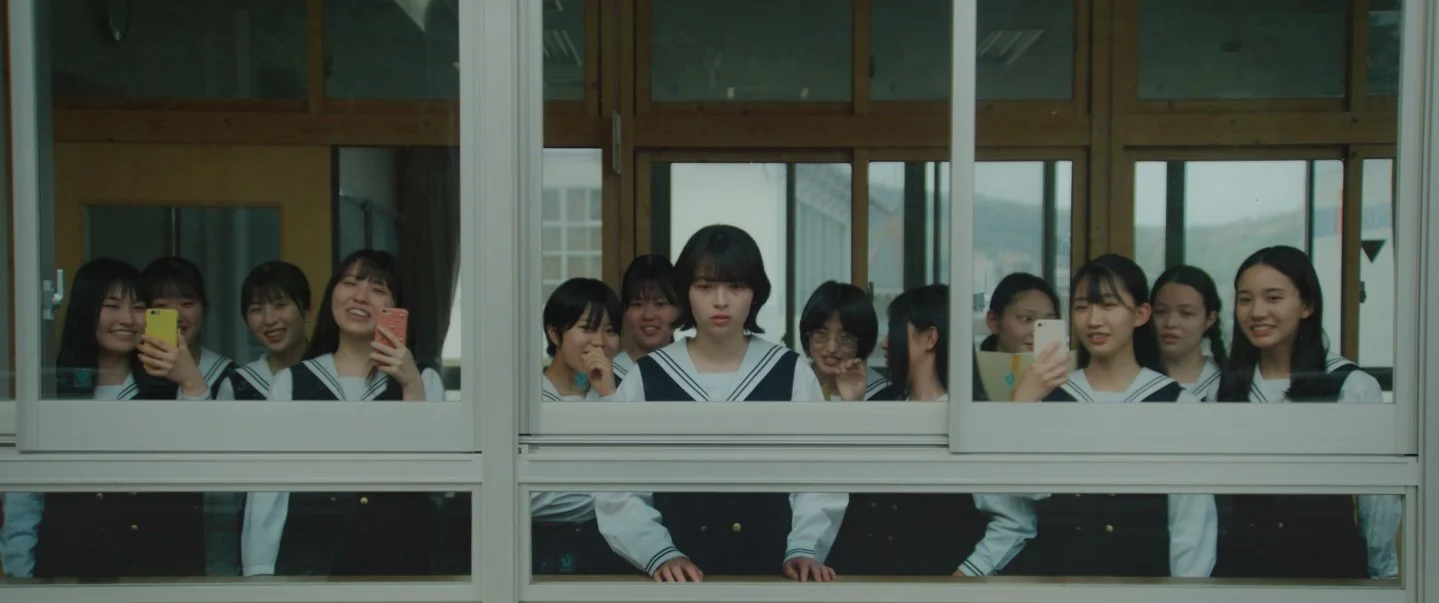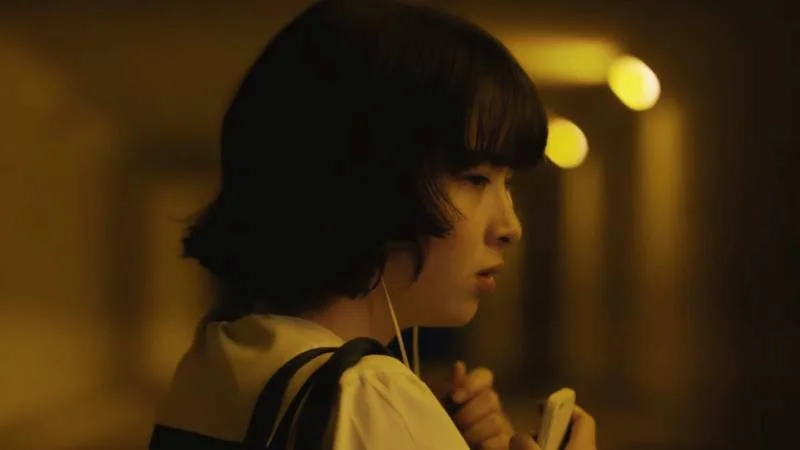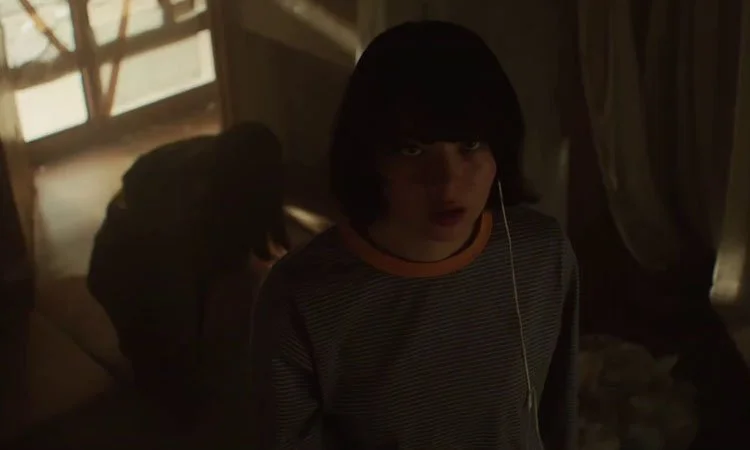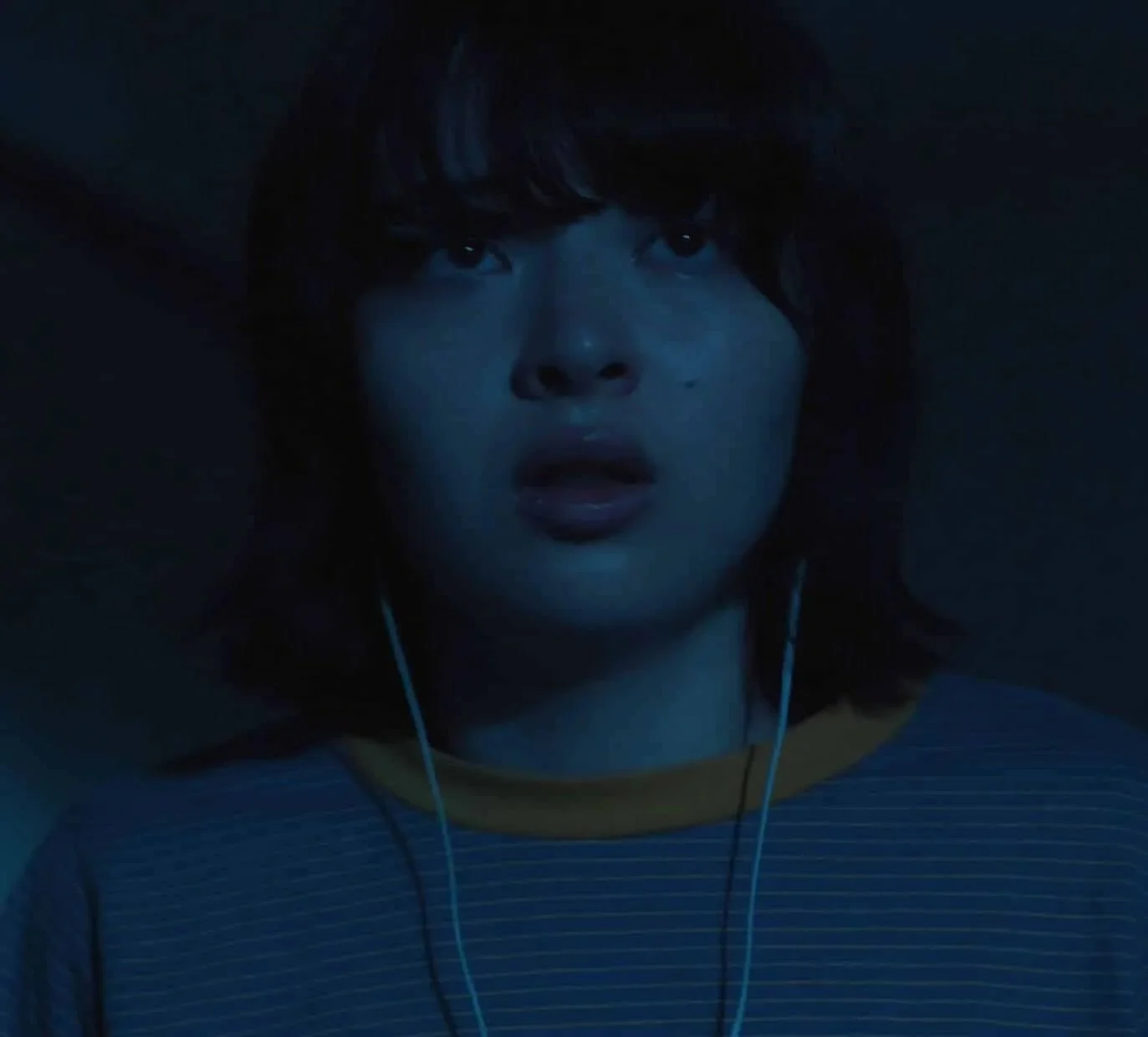Masaki Nishiyama’s feature debut, The Invisible Half, is an atmospheric, conceptually rich J-horror entry that offers chilling visuals, a fractured soundscape, and genuine thematic weight—but also struggles with its pacing and payoff. While it's tense, well-crafted, and often fascinating, it doesn’t always make the most of its considerable potential.
Elena, a "hafu" (half-Japanese, half-English) teen, is isolated at her all-girls Japanese school and begins to experience eerie phenomena tied to her smartphone—only visible through the screen and audible through her earphones. The monster she encounters, both literal and metaphorical, serves as an incisive allegory for Japan’s often unspoken xenophobia and the painful disconnection felt by biracial individuals. It’s smart material, and Nishiyama deserves credit for attempting to bring these rarely explored issues into a genre space that often leans on more traditional ghost stories.
From a technical standpoint, The Invisible Half is exceptionally strong. It’s bathed in an eerie dread from frame one. Its suffocating atmosphere, moments of silence punctuated by a brilliantly tense and fractured score, and haunting visuals—some straight out of a Nightmare on Elm Street fever dream—create scenes that linger in the mind. The CG, surprisingly restrained and effective, adds to the film’s unsettling tone rather than detracting from it.
But for all the talent on display, it never quite gels the way it should. The first act is glacial, and though things eventually kick into gear, the story spends too much time circling its themes rather than developing them. It's a slow-burn that often feels too slow, and despite some genuinely shocking and eerie moments, the overall narrative lacks momentum. By the final act, even as the weirdness ramps up and the visuals become more surreal and intense, the film's grip starts to loosen. I found myself appreciating the craft, but emotionally and narratively, I was already checked out.
Comparisons to It Follows are apt—it shares the sense of a looming, invisible threat and thematic depth—but The Invisible Half lacks the urgency and tight focus that made It Follows so compelling. It's a film that feels like it’s on the edge of greatness but never fully pushes through.
Still, there’s a lot here worth commending. Nishiyama’s voice is a welcome one, and the film’s exploration of racial identity through horror is overdue and commendable. If anything, The Invisible Half proves there’s space in J-horror for more socially conscious, layered storytelling. It may not be the gripping masterpiece it aims to be, but it’s certainly a brave and memorable step in that direction.
Jessie Hobson




